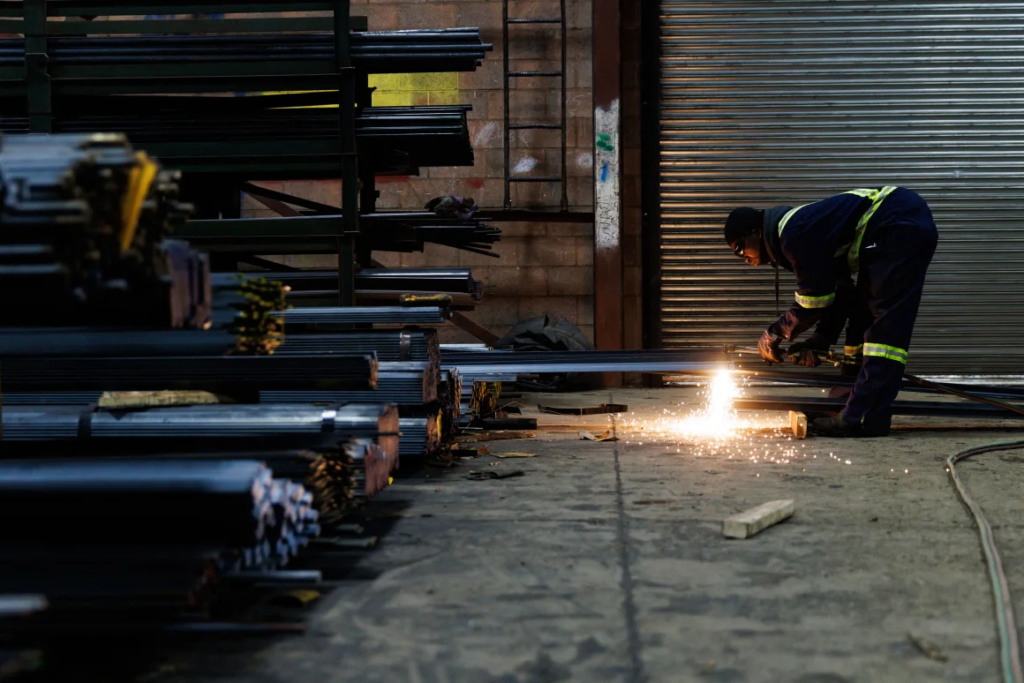President Donald Trump’s erratic trade policies are rapidly digging him into a deep economic and political hole, one that may soon be impossible to escape.
Just after markets spent a day reeling from Trump’s inconsistent threats to impose massive energy, steel, and aluminum tariffs on Canada—threats that could devastate the Canadian auto industry—Trump escalated the situation by placing tariffs on all steel and aluminum imports from every country. This move could raise the prices of a wide range of consumer and industrial goods in the U.S., with Europe immediately retaliating and increasing pressure on various American industries.

Wall Street is growing increasingly concerned about the potential fallout from Trump’s policies, which could undermine America’s already fragile economy. Stocks have dropped, with the Nasdaq entering a correction phase (a 10% drop from its recent peak) and the S&P 500 hovering near the same territory.
Trump has been given multiple chances to step back from the brink. His economic advisers, including Commerce Secretary Howard Lutnick, Treasury Secretary Scott Bessent, and National Economic Council Director Kevin Hassett, have repeatedly stressed that his tariff policy remains “fluid” and have pointed to progress in negotiations with foreign nations on issues like fentanyl and immigration.
At times, Trump has heeded their advice. He has delayed or adjusted key tariff actions, including postponing reciprocal tariffs on Canada and Mexico, pushing back the timeline for certain tariffs, and agreeing to meet with Canadian officials to resolve trade disagreements—a potential de-escalation of the trade conflict.
However, it seems Trump cannot resist the allure of tariffs. He remains drawn to the leverage they provide, gaining concessions in exchange for threatening tariffs or promising meetings. For instance, a recent tariff threat led Ontario to back down from imposing electricity surcharges.
“The president is in a tight spot, and every tariff (or threatened tariff) only worsens his position,” said Simon Johnson, MIT professor of global economics and management. “If he continues down this path, prices will rise, and the economy will slow even further.”
Corporate America, Wall Street, and consumers are growing increasingly frustrated with the volatility.
“Investors are worried that this could turn into a self-inflicted economic slowdown,” said Art Hogan, chief market strategist at B. Riley Wealth Management. “The endgame is unclear.”
Trump risks severely harming America’s economy with higher prices on businesses and consumers—an ironic consequence for a president who was elected on promises to tackle inflation.
“For anyone who voted for Trump expecting lower prices, they may be shocked and frustrated to find that prices haven’t dropped; in fact, they’ve gone up,” said Scott Lincicome, vice president of general economics at the Cato Institute’s Stiefel Trade Policy Center. “I don’t see an economic or political way out of this.”
The Inflation and Recession Dilemma
Trump might be seeking a “win” from tariffs, but the outcome could be severe: his trade policies could shock the economy enough to finally quell America’s persistent inflation.
It would be a painful solution. However, Speaker of the House Mike Johnson recently defended Trump’s approach as a necessary “shake-up.”
“This is what’s required to begin repairing and restoring the American economy,” Johnson said. “I believe this strategy will work.”
Consumer spending, which drives more than two-thirds of America’s economy, has already been spooked by tariff threats. If Americans pull back on spending, the resulting slowdown could ease inflation as demand drops.
Retailers are beginning to warn of this potential pullback. Walmart, Target, Kohl’s, and Dick’s Sporting Goods all predict that consumer spending will decrease due to the uncertainty created by Trump’s tariff policies. The S&P 500 retail index hit a 52-week low recently.
Delta also slashed its profit forecast, citing the economic uncertainty driving travelers to reconsider their plans. Meanwhile, small business uncertainty surged to its second-highest level since 1973.
While a recession is not imminent, the risks are rising. Goldman Sachs has raised its recession likelihood to 1-in-5, and former U.S. Treasury Secretary Larry Summers warned of a “real possibility” of a recession sparked by Trump’s trade policies.
“The newly announced tariffs on Canadian steel and aluminum are the worst yet. Raising the price of key materials for U.S. manufacturing industries is exactly what a foreign adversary would do,” Summers posted on X (formerly Twitter). “This is a self-inflicted wound to the U.S. economy.”
Could a Recession Solve Inflation?
While no one wants a recession, it could be the unintended solution to inflation. Philippa Dunne of The Liscio Report suggested that tariffs could, in the worst-case scenario, prevent further inflation, but it would require a recession.
“It’s a tough situation—if we want to avoid inflation, a recession may be the only way,” said Dunne. “It’s unfortunate, because those struggling the most—who likely voted for Trump—will be hit hardest.”
Trump’s aides have attempted to downplay recession concerns, suggesting that the tariffs will merely cause a short-term “disruption” as global trade realigns to favor the U.S.
White House press secretary Karoline Leavitt defended the tariffs as crucial to saving the U.S. economy.
“Tariffs are a tax cut for the American people,” she said during a press briefing, arguing that tariffs are essential to bringing production back to the U.S. and punishing countries that have taken advantage of America.
But if Trump keeps doubling down on tariffs, he may face few choices in the future.
“The reality is Trump has become so attached to tariffs that the situation may soon be irreversible,” said Lincicome. “The only way to bring inflation down from this point would be through a recession.”
